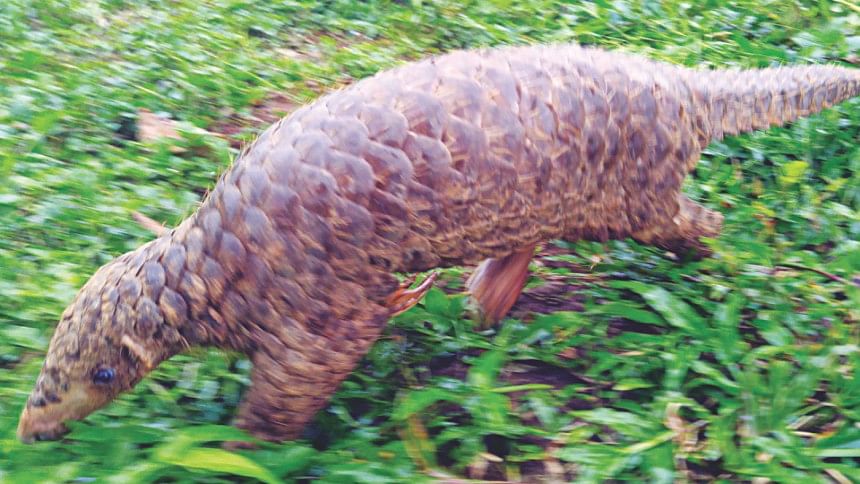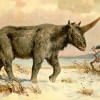Pangolins in peril

Although at first glance, a pangolin may look like a reptile, it is actually a mammal.
These mammals are covered in large, hardened overlapping scales with ridges. The keratin scales make up a hard shell of sorts, making the animal resemble a rui fish. Because of this resemblance, many locals call Pangolins, Bon Rui.
They are nocturnal creatures, preferring to sleep the day away.
According to an expert, these animals do not harm the people. They live deep in the forests of Sylhet, Sundarbans and Chittagong Hill Tracts. Pangolins have been declared as protected under the Wildlife Act of 1974.
Monzur Kader Chowdhury, former president of student organisation Pradhikar of Sylhet Agriculture University told this correspondent that people are killing the creatures indiscriminately, threatening their existence.
Parts of the creature are used for making traditional medicine or totka.
Animesh Ghose Ayon, wildlife biologist at Creative Conservation Alliance, told this correspondent that while studying a total of eleven forests in Bangladesh including Lawacherra, Rema-Kalenga and Rajkandi forest, he found that as a defence mechanism, these animals coil their body and tuck their face in under the tail.
He said there are eight species of pangolins in the world. Three pangolin species are reported to occur in Bangladesh, but currently only one species is present, the China pangolin.
Pangolins are also reportedly the most trafficked animal in the world.
Dr. M Monirul H. Khan, professor of Zoology Department at Jahangirnagar University told this correspondent, “The wild animals are nocturnal animals. During the night, they roam the forests. They dig the soil from one to one and a half meters with the help of their sharp nails and eat insects, aphids and ant. But ants are their favourite food.”
However, the prevailing superstition does not let them live. The traditional medicines they are used for are not backed by any scientific fact. These are actually a technique to prey on people who may not know the facts, he added.
The animal is currently listed as vulnerable by the International Nature and Natural Resources Conservation Association.

 For all latest news, follow The Daily Star's Google News channel.
For all latest news, follow The Daily Star's Google News channel. 




Comments